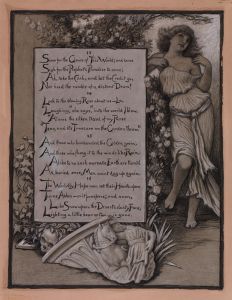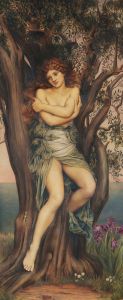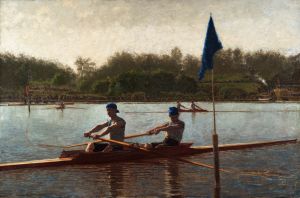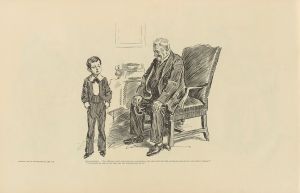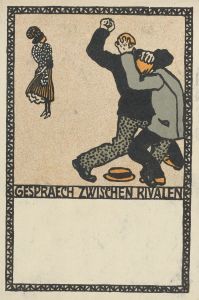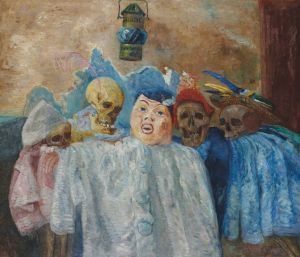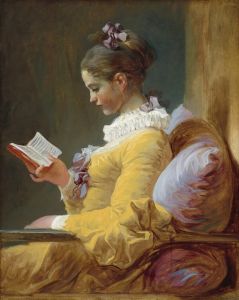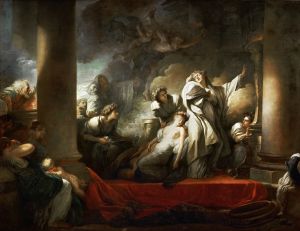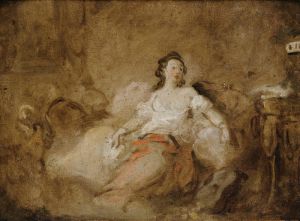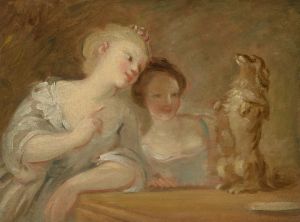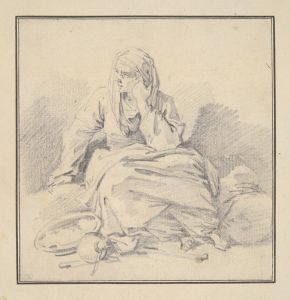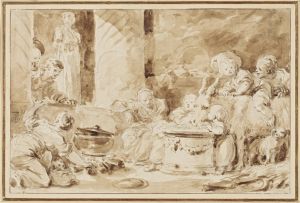
The Competition
A hand-painted replica of Jean-Honoré Fragonard’s masterpiece The Competition, meticulously crafted by professional artists to capture the true essence of the original. Each piece is created with museum-quality canvas and rare mineral pigments, carefully painted by experienced artists with delicate brushstrokes and rich, layered colors to perfectly recreate the texture of the original artwork. Unlike machine-printed reproductions, this hand-painted version brings the painting to life, infused with the artist’s emotions and skill in every stroke. Whether for personal collection or home decoration, it instantly elevates the artistic atmosphere of any space.
Jean-Honoré Fragonard was a prominent French painter and printmaker whose works are often associated with the Rococo style, characterized by its ornate and decorative qualities. However, specific information about a painting titled "The Competition" by Fragonard is not readily available in historical records or major art collections. Fragonard's oeuvre is extensive, with many of his works housed in prestigious institutions such as the Louvre in Paris and the Wallace Collection in London, but "The Competition" does not appear to be among the widely recognized or documented pieces attributed to him.
Fragonard is best known for his playful and sensuous scenes, often depicting themes of love, leisure, and the pleasures of life. His most famous works include "The Swing" and "The Progress of Love" series, which exemplify his mastery of light, color, and movement. These paintings capture the essence of the Rococo period, with its emphasis on elegance, frivolity, and the pursuit of pleasure.
Born in 1732 in Grasse, France, Fragonard showed an early talent for art and was sent to Paris to study under François Boucher, another leading Rococo artist. He later won the prestigious Prix de Rome, which allowed him to study in Italy. This experience greatly influenced his style, as he absorbed the works of the Italian masters and incorporated their techniques into his own.
Throughout his career, Fragonard enjoyed the patronage of the French aristocracy, who were eager to commission works that reflected their tastes and lifestyles. However, the onset of the French Revolution and the subsequent decline of the aristocracy led to a decrease in demand for his style of painting. Despite this, Fragonard continued to work and adapt, even as the art world shifted towards Neoclassicism.
In the absence of specific information about "The Competition," it is important to consider the broader context of Fragonard's work and the themes he commonly explored. His paintings often feature dynamic compositions, with figures engaged in lively interactions, set against lush, idyllic landscapes or opulent interiors. The use of soft, pastel colors and fluid brushwork are hallmarks of his style, creating a sense of movement and spontaneity.
Fragonard's legacy is that of a master of the Rococo, whose works continue to be celebrated for their beauty and technical brilliance. While not all of his paintings are as well-documented or preserved as his most famous pieces, his influence on the art world remains significant. His ability to capture the fleeting joys of life with such grace and elegance ensures that his work continues to be studied and admired by art enthusiasts and scholars alike.
In conclusion, while specific details about a painting titled "The Competition" by Jean-Honoré Fragonard are not available, understanding his general style and thematic focus provides insight into what such a work might entail. Fragonard's contributions to the Rococo movement and his enduring impact on the art world are well-documented, securing his place as one of the great artists of his time.





